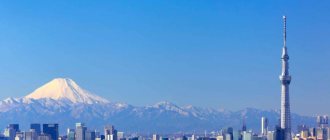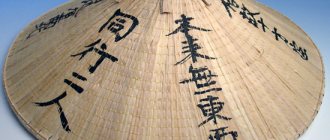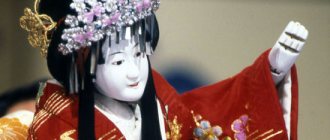A nuclear explosion gave birth to... progress
The medical history of Japan is amazing. This is a country where in ancient times disease was considered sent by the gods. And treatment and prevention were based on religious rituals. When young doctors were sent to China for training in the 6th century, all paganism was sharply rejected and a course towards Eastern medicine was adopted. The next revolution took place in the middle of the 19th century: the Japanese emperor renounced this course and ordered that future doctors be trained exclusively in Western medicine. In just 50 years, the country has forgotten about the ancient method of herbal medicine, Kampo. Now it is being restored bit by bit.
Today, the level of healthcare in Japan is considered the highest on the planet. Paradoxically, the Land of the Rising Sun made a powerful breakthrough after the terrible bombing of Hiroshima and Nagasaki. Then the health and capacity of every citizen began to be worth its weight in gold. There is a need for highly qualified specialists. Now the highest quality of diagnosis and treatment has become a tradition and a hallmark of Japanese medicine.
For Japanese citizens, the country has compulsory health insurance. It is available to everyone, regardless of income level. Children under 13 years of age are served free of charge. At the same time, insurance is not universal - it covers up to 70% of the cost of treatment. And people over 40 years old have to pay for many services out of their own pocket.
The main principle of Japanese medicine is that a patient can consult any doctor of his choice, regardless of the form of ownership of the clinic. And since the prices for all medical services are regulated by the state, municipal hospitals and private clinics (and there are up to 70%) compete for the number of patients, taking care of good equipment, the introduction of technology, and improving the level of doctors.
By the way, an important role in this issue is played by the attitude towards science and scientific innovation in general, not only in the medical field. Japan has the highest percentage in the world for the implementation of the fruits of the creativity of scientists - 80%! That is why the latest technologies, which doctors all over the world can only dream of, are often considered ordinary, “at-hand”.
At the same time, you will not find inflated prices for the cost of services. In the land of the samurai, the principle “High quality at an affordable price” really works. They say: “Instead of striving for unnecessary luxury, we offer truly necessary service at its real cost.”
From the feudal system to the 21st century
Before World War II, Japan was a relatively poor country with an almost feudal structure. Healthcare was also at an appropriate level: thousands of people got sick and died from infectious diseases, especially tuberculosis.
The change in the situation is usually associated with what was later called the Japanese economic miracle. When forming the healthcare system in the early 60s of the last century, the emphasis was placed primarily on preventive medicine. The authorities began educational work among the population, organized medical examinations and vaccinations. In those years, the state set the task: to provide medical services to everyone, at any time and everywhere with a minimum payment for them.
In the 70s, they began to increase the number of doctors, as well as improve the medical education system.
In the 80s, reforms were carried out aimed at increasing the state’s share in the financing of social services and healthcare, among other things. This expanded the possibilities of insurance medicine. Now the public health insurance system covers the entire population of the country.
Statistics of the “record holder”
According to WHO, this small island nation spends 8.3% of its GDP on health care. That is, 2.7 dollars per capita. For comparison, Russian data: 5.4% of GDP and slightly more than a dollar per capita expenditure.
The country of cherry blossoms ranks 10th in the world for the quality of healthcare. However, in terms of technical equipment and number of research medical centers, it has long been among the first. This is eloquently evidenced by the world's highest life expectancy indicator: men, on average, live up to 79 years, women - up to 86. By the way, the current Russian indicators - 62 years for men and 74 years for women - were the same in Japan in 50s, just after the nuclear bombing...
In addition, Japan is one of the first countries to talk about so-called “healthy longevity.” In this she is a leader: the Japanese live 75 years almost without disease. For comparison: Germans are 72 years old, Americans are 69 years old, Russians are 58 years old.
The leading cause of death here, as throughout the world, is oncology. However, the country “brings to the flag” a large number of lives saved from this disease. Thus, according to international data, 70% of Japanese patients live more than 5 years after surgical treatment of stomach cancer. While Dutch – 47, and British – 33%.
Comparative data:
- Number of doctors per 1000 people: Japan - 2.2, Germany - 3.6, USA - 2.4.
- Number of nurses per 1000 people: Japan - 9.5, Germany - 10.7, USA - 10.8.
- Number of medical examinations per person per year: Japan - 13.2, Germany - 7.7, USA - 3.9.
By insurance
Question answer
Why do the Japanese live long? The Japanese receive health insurance through the municipality or at the enterprise where they work. It is not possible to purchase a policy directly from an insurance company. Municipal insurance does not fully cover treatment costs. But it also includes partial payment for medicines. To cover all expenses, you will have to pay extra from your own pocket.
There are two types of pharmacies in Japan: over-the-counter ones - these can be found in cities at every turn, and those where you can buy drugs prescribed by a doctor. The cost of some of them is covered by insurance, so sometimes the drugs are simply dispensed at the hospital or at its associated pharmacy.
Apply for treatment
Ningen Dokku and obedient patients
The country's medicine has been put on the rails of regular medical examinations. Such measures were taken just after the bombing: mandatory regular diagnostics at the state level were introduced more than 50 years ago. Medical examination is carried out starting from the moment of birth: 1 month, 3 months, 6 months, 1 year, 1.5 years, 3 years. Also, in the preschool period, after leaving school, and while studying at school and after entering work, the examination is carried out every year.
Nothing new, you say? This happened in our country too. However, the level of medical culture of the Japanese is very high, citizens honestly undergo medical examinations. Of course, the doctors themselves play an important role, as they perform their functions clearly, carry out procedures efficiently, and choose effective treatment.
“Compared to European countries, we don’t have much difference in the type of methods used,” Yu Koshizuka, director of one of the Tokyo Institutes, told us in an exclusive interview during the 3rd Moscow Congress on Medical and Health Tourism. — The only difference is in the specialists who work on this equipment. We practically never have cases where something was overlooked and missed.”
By the way, about the obedience of patients, Mr. Koshizuka gave an interesting example. Some services you have to pay for yourself. For example, for people over 40 years of age, screening diagnostics become more expensive, as the risks increase - diabetes, cardiovascular diseases and cancer, and a more thorough examination is required. This diagnosis is called “Ningen Dokku”. This program is not paid for by employers or insurance companies. And the Japanese always undergo Ningen Dokku, because this is the key to good health, early detection and treatment of cancer.
“For example, during an endoscopic diagnosis of the stomach, a suspicious point was noticed, but last year it was not there. – explains doctor Koshizuka. “The equipment immediately allows the tumor to be excised, and the patient forgets about the problem. If necessary, the patient undergoes chemotherapy or radiotherapy to prevent new formations, however, the doses are incomparably smaller and do not carry such a large load on the body. In short, timely treatment is one of the reasons for the longevity of the Japanese nation.”
By the way, the Japanese often have a chance to save money thanks to competition for patients and a large percentage of private business in medicine. So, very often clinics organize promotions: HIV tests, cancer diagnostics, examinations by some specialists and other preventive procedures - all for free.
Window into the medical tourism of the East
Recently, patients all over the world have begun to use the services of Japanese doctors. Moreover, most of all, this interested the Russians. Since the beginning of 2011, when the Japanese Government established a medical visa, 135 of our citizens have visited the Land of Cherry Blossoms. Most are from the Far Eastern region. However, 43 people are from the European part of Russia. While there are only 20 people from the USA. These data were shared with our magazine by the National Tourism Organization of Japan. The price level in the country's clinics can be compared with European ones, but the quality of treatment is undoubtedly better.
What problems do people face when going to the islands? Scrupulous samurai took this into account: from the countries of the former Union, in most cases, they are treated with cardiovascular pathologies and arrhythmia, multiple sclerosis, and liver cancer. There are many calls for thyroid diseases, intervertebral hernia, and prostate cancer. For comparison: Europeans go to Japan to solve the problem of lung cancer. While Asians, like Russians, suffer from heart defects and liver cancer.
One of the differences that Japanese clinics have made for foreigners is that they have introduced a slightly different diagnostic program, as for people who are not checked regularly. For example, if a standard examination costs up to 500 euros, then foreigners are usually offered a more detailed examination, somewhat individualized, depending on the complaints. On average, it turns out to be about 1000 euros.
It includes a standard set for a detailed examination: a detailed blood test, which shows the state of the immune system and all organs of the body; for women - cytological smear and mammography; for men – prostate examination; CT scan of the lungs; gastrointestinal endoscopy; electrocardiogram, detailed eye examination.
Are you afraid of communication barriers? Not worth it! No one will scare you with hieroglyphs. Most Japanese doctors speak English. And besides, we must not forget that Japan is a country of technology and there are always instant translators at hand into any language in the world.
Apply for treatment
Traditional and non-traditional approaches in medicine
Japan is amazing in that medicine here quite successfully combines advanced technologies and traditions that have enjoyed enormous prestige for centuries. In general, the Japanese are not too inclined to take any medications, despite the fact that many of their developments are recognized as the most effective drugs in the world. Thus, many elderly residents of the country categorically refuse to take pills to improve vision, preferring to tap with a special tube between the second and third toes - in their opinion, they are directly related to a person’s eyes.
In this country, methods that would be considered alternative in other countries are still actively used.
Traditional medicine in Japan is represented by the following areas:
- shiatsu – treatment with fingers;
- reiki - healing through the touch of hands;
- acupuncture – acupuncture;
- aromatherapy - treatment with odors.
- naturopathy – treatment of a patient by controlling his nutrition, psychological state, biological environment and social sphere;
- homeopathy – treatment with dietary supplements.
Traditional medicine in Japan is most often used to treat neurological diseases, swelling, scoliosis, bronchial asthma, diabetes, gastritis, metabolic disorders, and diseases of internal organs.










